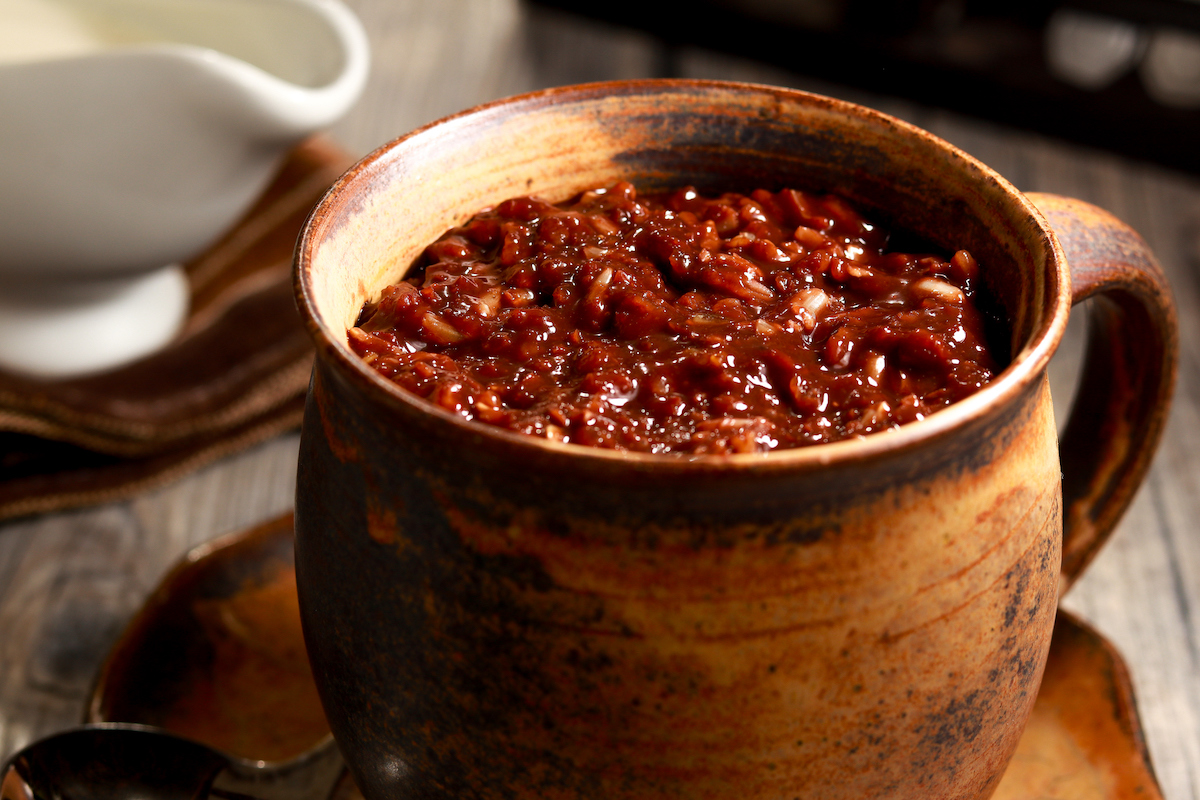By Olivia Lozano | Richmond Pulse
A great way to shatter a 9-year-old’s self-perception is by telling them their champorado was made incorrectly. No one tells you you’re Filipina when you’re young. Well, your parents might, but you have no concept of what that means. To a 9-year-old, it just means you have lechon at Thanksgiving instead of turkey and that you call your dad’s sister “tita” instead of “aunt.”
Your dad doesn’t reveal the traumas he went through immigrating to a foreign country at the same age — like being forced to learn a new language, adapting to an alien culture, seeing white people for the first time, and being bullied for bringing “smelly” lunches to school. Through all of this, he also doesn’t tell you that the “special culinary treat” he makes for you and your sister is, to some, a blasphemous version of a traditional dessert.
So picture this: me at my elementary school’s multicultural potluck blissfully unaware of the events about to take place. For the potluck, every child was to bring a favorite cultural meal and share it with their class. These days were always so fun to look forward to. Teachers would put up decorations and flags from various countries. We’d have the afternoon reserved to eat and impress our peers with the pronunciations of the foods. To this day, I don’t remember what I brought because all I could focus my attention on the entire afternoon was when I learned that a Filipino dessert I grew up eating was actually a fraudulent re-creation.

After I presented my food, I was feeling pretty good about myself. Everyone was going to love what my mom made because she was unofficially the “best chef in the world.”
My mom is from Switzerland and grew up on a little farm tucked away just outside the capital city of Bern. There, she taught herself how to cook while her parents and older siblings were tending to the farm 15 hours a day. When my mom knew she was going to raise mixed children, she took it upon herself to learn Filipino recipes from my dad’s grandmother. She learned to make chicken adobo, pancit and arroz caldo, among others. She emphasized the importance of understanding one’s culture, and the best way for her to teach us about both sides was through food.
After I sat down, the attention turned to Zachary, a fellow Filipino classmate of mine. He was grinning, eager to unveil the delicious dessert underneath the tin foil. The sweet aroma of dark chocolate spread across the room. We gawked at its rich brown color and creamy texture. What could this be? And then we heard it: “Today, I’m sharing champorado, a Filipino dessert made by my dad.” Zachary’s dad explained how he made it using rice, chocolate, evaporated milk and sugar.
Everyone was mesmerized but me because, unbeknownst to everyone else, I was in a state of shock. This information was so life-altering that I went silent for the rest of the afternoon. What was supposed to be a wholesome fourth grade potluck turned into a puzzling introduction to cultural awareness.
In comparison with my mom, my dad is unofficially “the worst cook on this planet.” What he does manage to make well, though, is champorado — or so I thought. What I had grown up knowing as “champorado” was actually a representation of an unattainable flavor profile, one he didn’t have access to growing up in the Bay Area. His version was made from instant oats, chocolate Nesquik powder, brown sugar and Coffee-Mate creamer. His version was all I knew.
So how in the world was I supposed to know it had rice in it?! Zachary handed me a bowl and asked if I’d had it before. Embarrassed, I just nodded and said, “Yeah, it’s my favorite.” I dipped my spoon into the bowl and brought the hot porridge to my mouth. The result was a dance of flavor that hit every last spot.
Experiencing it for the first time formed a core memory in my mind. I don’t know how to explain it, but this moment formulated an idea that I was different from everybody else and that by being Filipina, I was sharing a culture with millions of people I didn’t know. It also made me feel inferior for not knowing as much about the culture or our food as I thought.
Years later, I was to experience further revelations when, in 2022, I learned about the Mexican version.
Mexican champurrado (note the spelling difference) is a velvety smooth and thick chocolate drink made from masa harina, piloncillo, Mexican chocolate, cinnamon, vanilla extract and milk. I first tried it when traveling to Mexico City with my partner and have craved it every day since.

The history of Mexico and the Philippines is closely intertwined and is not openly discussed often between the cultures. We were both colonized by Spain and forced into religious piety; we are family-oriented; we share language and food; and some of us even share the same last names.
Mexico brought over champurrado via the Manila galleons. Over time, the recipe adapted to the land with the main difference being the types of grains used.
“Real” Filipino champorado is not oatmeal with Nesquik but rather a wonderfully rich and decadent porridge made from glutinous rice and tablea chocolate — ingredients my dad couldn’t get when he immigrated to the U.S. in 1979.
He is not alone. It is common for immigrants to adapt their recipes out of necessity when traditional or regional ingredients aren’t available. Glutinous rice is one such ingredient. Your average grocery store in America during the ’80s was not going to have an “ethnic aisle” for that.
Food made by immigrants should not be held to a high standard of authenticity when, generally, there isn’t a “right” way to make food. It’s OK for food to be adapted to the ingredients that are readily available. Restaurants owned by immigrants in the U.S. sometimes face criticism about how the flavor of their food isn’t “authentic” to how it is made in the country of origin. It’s disheartening to read Yelp comments from customers complaining about the miniscule changes made to a particular meal. In one such comment, a Thai curry was rated 3 stars because it used Genovese basil instead of the traditional Thai basil. Whatever the restaurant’s reasoning for this change, it can probably be attributed to the fact that it was nowhere near an Asian grocery store or supplier.
I have a stronger appreciation for the trials that my family had to endure when moving to the U.S and an even deeper understanding of what they sacrificed when adapting.
Sometimes, I’ll watch my dad heat up his small pot of oats, carefully adding a heaping tablespoon each of Nesquik powder and brown sugar. His version is made entirely from love and an inherent desire to connect to his roots. In a subtle way, he’s taught me an important life lesson, which is to make the best of what you have even if it’s not perfect.
When life hands you instant oats, you can still make a pretty sweet champorado.
Olivia Lozano is a contributing writer for Richmond Pulse, a youth-led news and media platform in Richmond, CA., where this story first appeared. October is Filipino American History Month.





